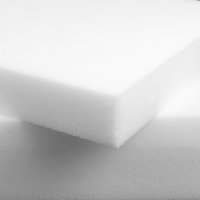Soundproof & Sound Absorbing Foam
Whether you’re building a recording studio or are looking for ways to improve your living room’s acoustics, there’s an acoustic foam option for you. No matter your goals, soundproofing foam can help you achieve them.
Acoustic foam is an easy-to-install soundproofing tool commonly used in commercial and residential buildings. Learn more about how acoustic foam improves acoustics and minimizes reverberation below, then determine which of our sound-absorbing foam products is the best fit for you!
Common Questions About Soundproofing Foam
Learn more about acoustic foam:
What Kind of Foam Is Best for Soundproofing?
Foam is an excellent soundproofing material because manufacturers can make it soft and dense. For a material to absorb sound, it needs to provide a place for sound energy to go. It then must keep it there by converting the sound into dispersable heat.
The best sound deadening foam is porous. Pores act as alleyways for sound energy to travel down — but since the alley is tight, it’s hard for the sound to get out. Sound bounces around inside the pores, causing friction that converts its energy to heat. The panel then disperses the heat across its surface.
Does Acoustic Foam Reduce Sound?
Acoustic foam reduces ambient noise. When a soundwave runs into a hard surface, it reflects back toward the source. The resulting echoes and reverberations can be distracting in your home or office. In a recording studio or concert hall, unwanted echoes and reverberations can ruin a great performance.
Acoustic foam reduces sound by absorbing as much energy as it can. Because the foam is thick and porous, a soundwave has to expend a lot of energy to reflect. Most of the energy turns to heat and disperses inside the panel.
You can tell how much sound your acoustic foam will absorb by checking its Noise Reduction Coefficient (NRC). The NRC is a 0-1 scale describing how much sound a material absorbs.
Is Acoustic Foam a Fire Hazard?
Fire safety is a top concern when designing soundproof foam. Understand that acoustic foam is flammable. However, many of our foam panels earn a Class A™ flammability rating, meaning they resist fire and are unlikely to contribute to a fire’s spread. Our Class A acoustic foam resists temperatures up to 482 degrees Fahrenheit. Use Class A foam around hot objects or machinery to reduce ambient noise and limit the chance of a fire.





